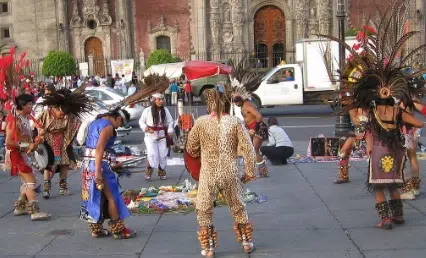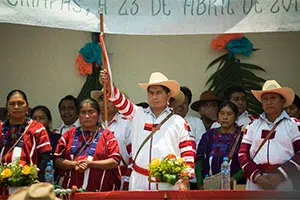 The concept of indigenism can be understood in different ways. According to the first meaning mentioned by the Royal Spanish Academy ( RAE ) in its dictionary, this is the name given to the set of studies focused on the aboriginal populations of the American continent that are currently found in nations where there is a predominance of European civilization .
The concept of indigenism can be understood in different ways. According to the first meaning mentioned by the Royal Spanish Academy ( RAE ) in its dictionary, this is the name given to the set of studies focused on the aboriginal populations of the American continent that are currently found in nations where there is a predominance of European civilization .
The doctrine that defends the rights of aborigines and mestizos in Latin American countries is also called indigenism. This movement promotes economic, social and political demands for these groups.
It can be said that indigenismo is a current dedicated to the research and revaluation of indigenous peoples. In this framework, it combats the discrimination suffered by these cultures and fights against Eurocentrism .
The roots of indigenism are found in the colonial era . By then there were already claims and demands to improve the situation of the native inhabitants. However, in the 19th century this trend lost strength , although it then began to recover in the 20th century .
Indigenismo maintains that indigenous people are victims of the system, resulting in marginalization from society . These communities suffer oppression and exploitation and do not usually receive the benefits that are linked to the progress of civilization.
It is important to keep in mind that there are various branches within indigenism. Some are based on the demand for the full integration of indigenous people into national and global society, for example, while others demand recognition of indigenous specificity and compensation for centuries of harm.
In art , finally, indigenismo consists of exalting indigenous themes . The Argentine Liliana Ancalao , the Peruvian Camilo Blas , the Ecuadorian Mónica Ojeda, the Ecuadorian Oswaldo Guayasamín , the Paraguayan Susy Delgado and the Mexican Diego Rivera are considered artists who developed indigenismo.
Another of the most relevant figures of this movement was the Salvadoran Alejandro Marroquín , an anthropologist who dedicated much of his work to enriching the theory that revolves around indigenism. Among his best-known works in this framework we can mention Balance of indigenism. Report on indigenous policy in America , which was published in 1972 in Mexico.
 For Marroquín, if we understand this concept as state policy, its purpose is to pay attention to the problems that plague indigenous peoples and try to solve them so that they can integrate into the nationality that corresponds to them for the territory in which they are located and found before colonization . In his study he recognizes the following classification:
For Marroquín, if we understand this concept as state policy, its purpose is to pay attention to the problems that plague indigenous peoples and try to solve them so that they can integrate into the nationality that corresponds to them for the territory in which they are located and found before colonization . In his study he recognizes the following classification:
* political indigenism : also known as revolutionary or reformist . Its origin took place when it was proposed that indigenous people participate in the various transformation projects that took place on their lands, such as the revolutions in Bolivia and Mexico. This type of indigenism, Marroquín points out, emphasizes the social demand of the individual and their fight to conserve their territory. The confrontation with landowners, caciques, bureaucrats and gamonales also enters;
* community indigenism : this variant of the previous one emphasizes the collective nature of land ownership, as well as the customs and uses of the indigenous community,
* developmental indigenism : it appeared when governments began to worry about the integration of indigenous peoples and their lands into the development of the economy and market of their respective countries. It is important to remember that, in addition to racial and cultural discrimination, these people suffer the impact of government decisions that entail tasks such as deforestation;
* anthropological indigenism : it is considered part of anthropology, the science dedicated to the study of the human being, integrating all its aspects, from the physical to the cultural, and is ideologically related to the developmental and political.
